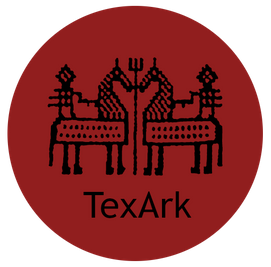Our research is interdisciplinary and combine several of the traditional academic fields of research, as well as knowledge of craft practices and methods. Textiles and textile related objects are the main sources for our research, while our interest and research questions regard people and societies.
The Scandinavian late iron age might be the most widely spread and most used symbol for nationalistic movements throughout the western world. The idea of the Vikings as a strong and able people, a ruling elite, is deeply rooted in our minds. While this might be a part of the truth it is not the whole truth. To start with "the Vikings" are not one people all behaving, looking and acting the same. The people from the late iron age Scandinavia is a people with close connections between smaller groups sharing a similar material culture, and as such probably also a similar world of ideas. Some of these peoples moved out of Scandinavia, traveling and coming back, or settled down, for a short time or for generations. Some of it was done peacefully, some of it was not.
Most of the known travels of the peoples of middle Sweden, Mälardalen, were going eastwards, over the Baltic sea and then following the rivers in what is now Russia. Along these waterways a large number of artefacts of Scandinavian origin are found in archaeological excavations. These artefacts tell the story of settlements and societies strongly influenced by Scandinavian culture, but also the story of the building of a new identity.
Our research is based on three key theories:
- Culture is not static
- No one is indifferent to new impressions
- Culture exchange always travels in both directions
Following these it becomes clear that the story above lacks important aspects. One of them is what happened in middle Sweden in the meantime? Even if middle Sweden was the origin and core of this cultural world, it could not have been indifferent to the new incoming impressions. We ask the question how the contacts with a new world shaped middle Sweden during the last centuries of the late iron age. And even more interesting, if we look around us, where do we find these traces today and do we need to reconsider our understanding of history and the "Viking legacy"? The answer we would say is: Yes, most certainly so.





